Jewelry Brand German Kabirski Launches 31 Workflows Within Four Months and Achieves 2349% ROI with Email and Pop-up Automation
Jewelry Brand German Kabirski Launches 31 Workflows Within Four Months and Achieves 2349% ROI with Email and Pop-up Automation
Challenges
Increase share of revenue within the email channelIncrease the number of leads acquired on the website
Solutions
Launch 31 workflows across email and websiteAdd lead capture pop-ups on the website
Results
2349% ROI from Maestra implementation21.33% Email revenue share
Switched to Maestra from:
Klaviyo
Integrated with:
Shopify storeRecart SMS marketing app
Noteworthy features
A floating discount bar displays newsletter promo codes for a simpler shopping experience
German Kabirski is a Shopify-based jewelry store specializing in exclusive pieces. In March 2023, the store switched from using Klaviyo to Maestra. Within four months, German Kabirski launched 31 workflows with email sequences, product recommendations and lead generation pop-ups using Maestra.
German Kabirski’s brand centers around unique designer jewelry, so a more “typical” marketing approach with lots of different discounts and social proof campaigns can potentially damage the brand’s image. This meant that a more delicate approach was needed to maintain the exclusive jewelry experience for consumers while introducing campaigns that would encourage more purchases.
Marketing Automation Results
-
2349 %ROI from Maestra implementation
-
21.33 %Email revenue share
-
31Workflows launched within four months
2349% ROI
The ROI has been calculated for the four-month period during which the brand has used Maestra. Exact figures have not been revealed, as requested by German Kabirski. Data is collected using the Last Paid Click attribution model and has been calculated using the following formula:

Maestra provides German Kabirski with a 2349% ROI. Every $1 invested in the platform brings a return of $23.49 (note that this refers to net marketing profit, not revenue).
Maestra provided us with a dedicated success manager who has been instrumental in launching our workflows both in email and pop-ups, making the process seamless.
On behalf of the company, I would like to thank Maestra for the exceptional sensitivity and attention the team has shown to our company.
It was pleasant and easy to work together despite the time difference. We tested many hypotheses and, in general, I can say that we are more than satisfied with the result.
Why and how German Kabirski implemented Maestra
German Kabirski decided to integrate Maestra for several reasons:
- Despite having more customization options for both email and website personalization, the subscription cost for Maestra turned out to be the same as Klaviyo.
- In Klaviyo, the brand lacked a dedicated manager. They had set up a few basic workflows with the help of an agency. However, when they wanted to launch something new, such as an anniversary sequence based on previous purchases, they faced a shortage of resources. With Maestra, German Kabirski has a dedicated Success Manager responsible for launching and improving workflows.
- Some flows that the brand wanted to implement couldn’t be achieved with Klaviyo alone and would require installing separate applications on Shopify. For example, a pop-up for collecting birthdays and subsequent congratulatory campaign sequences
The integration of Maestra with Shopify took approximately two hours. It took another two days to upload legacy data on orders and customers from Shopify, and an additional three days to migrate the existing 10 email flows from Klaviyo to Maestra.
How pop-ups help collect leads
Leads are collected using multiple pop-ups.
Subscription form
New customers see a banner on the website inviting them to subscribe to the newsletter. When they click, a welcome pop-up appears, and after subscribing, the customer enters a welcome sequence consisting of 7 emails. 48.78% of the people who click on the bar share their email address.
Exit intent pop-up
If a new visitor attempts to leave the website, they are also presented with a pop-up offering a discount in exchange for leaving their email. On average, the pop-up successfully captures contacts from 0.85% of the audience that views it.
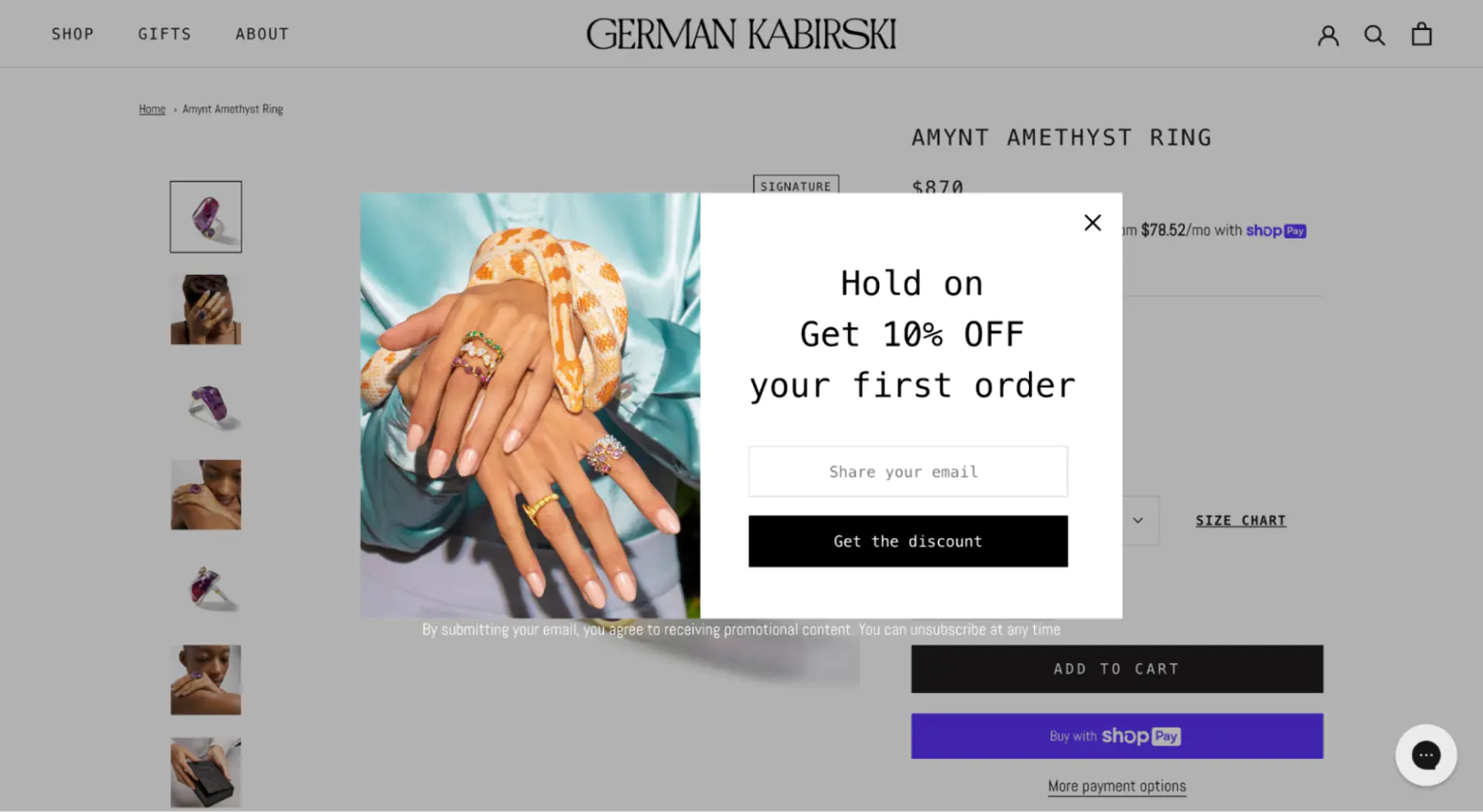
“Recently browsed” widget
For new visitors who have viewed multiple jewelry pieces in one session, a pop-up appears with an offer to save their browsing history. By providing their email, the person receives a list of the viewed jewelry pieces sent to their inbox. On average, the pop-up successfully converts 1.45% of viewers to email leads.
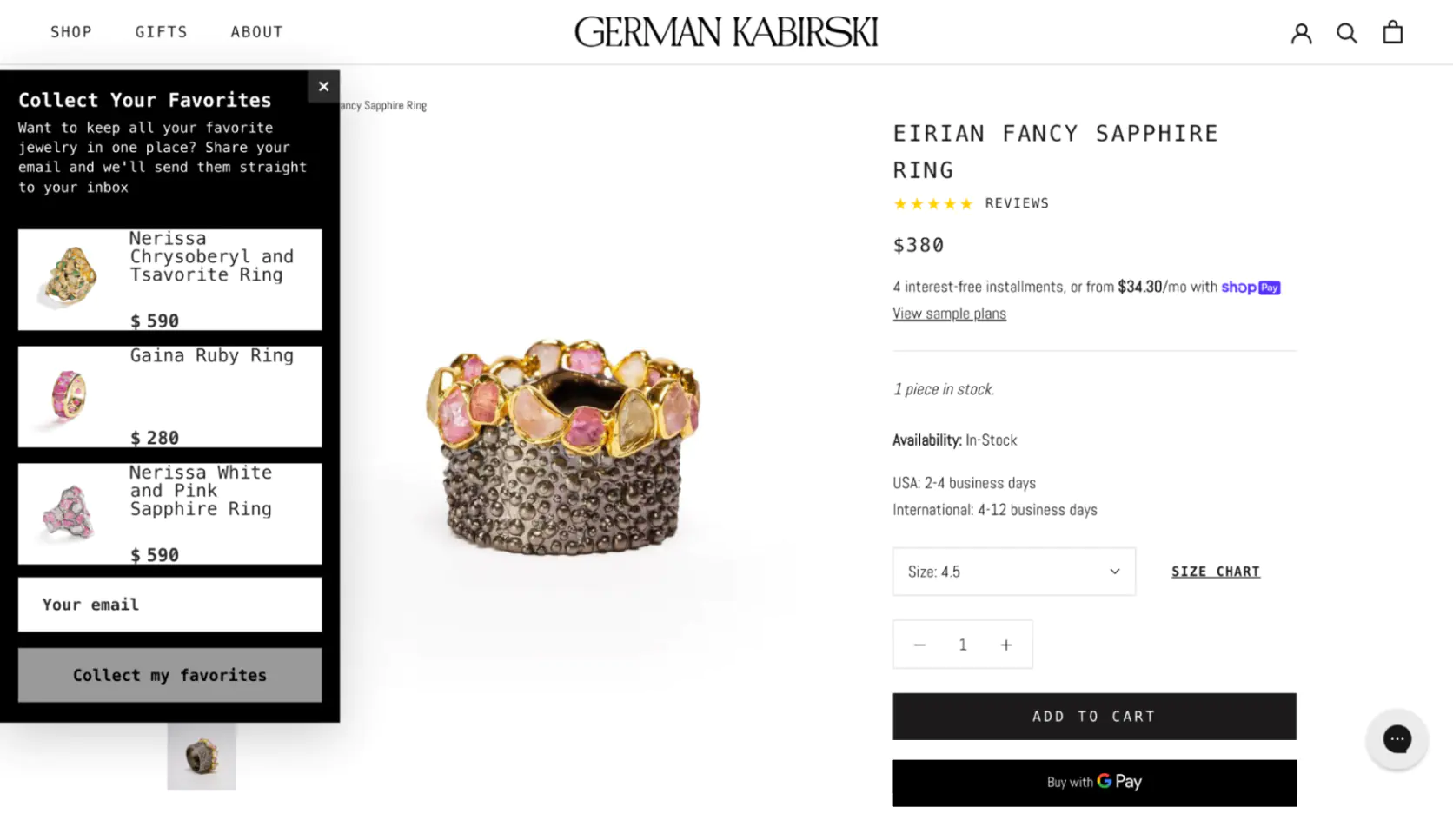
After subscribing to the mailing list, the customer receives an email with their entire browsing history, making it more convenient for them to revisit these items at any moment.
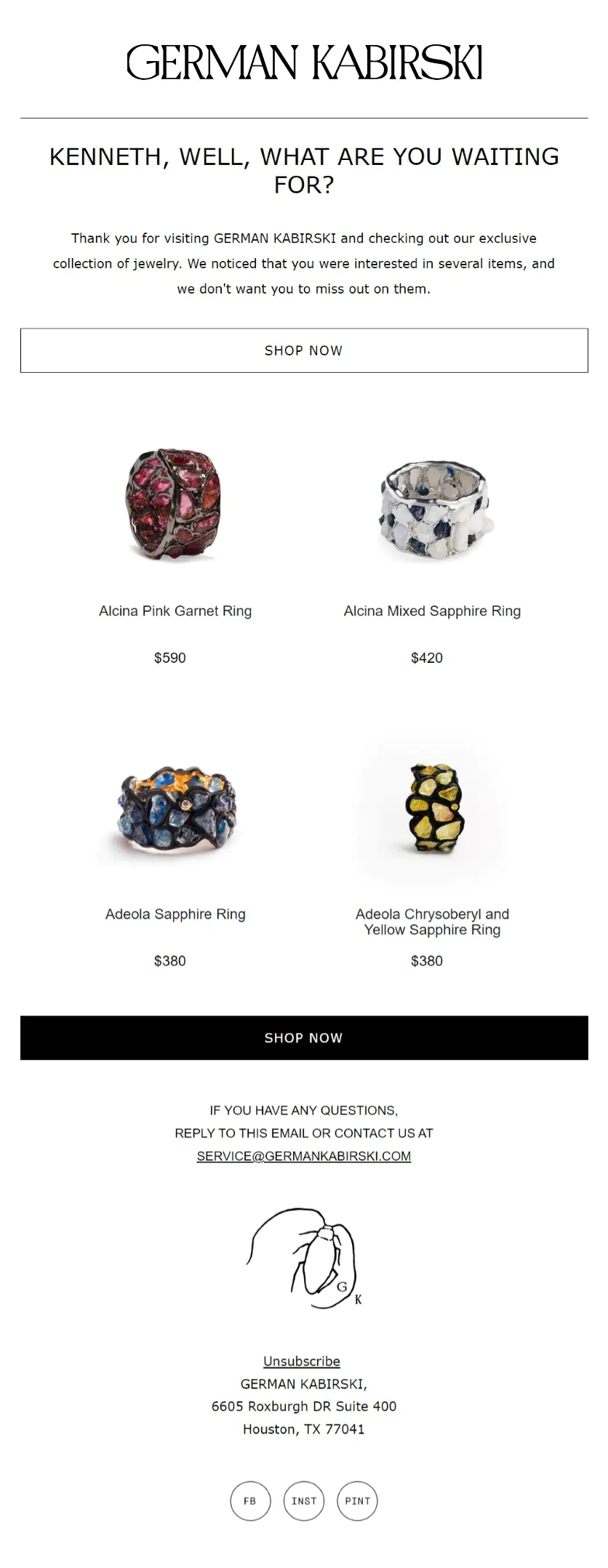
Email campaign with all the customer’s browsed products
Improved customer data enrichment
When customers of German Kabirski’s store register on the website or subscribe through lead generation pop-ups, they only provide their name and email address.
To enrich customer data and obtain their date of birth, we set up a cross-channel workflow: at some point in a welcome workflow, we send an email to customers asking them to share their date of birth.
Once they click on a link, they see a pop-up, also configured in Maestra. The customer enters their birth month and day, and the data from the pop-up is automatically transferred to the unified customer profile. After this, the customer enters the birthday workflow.
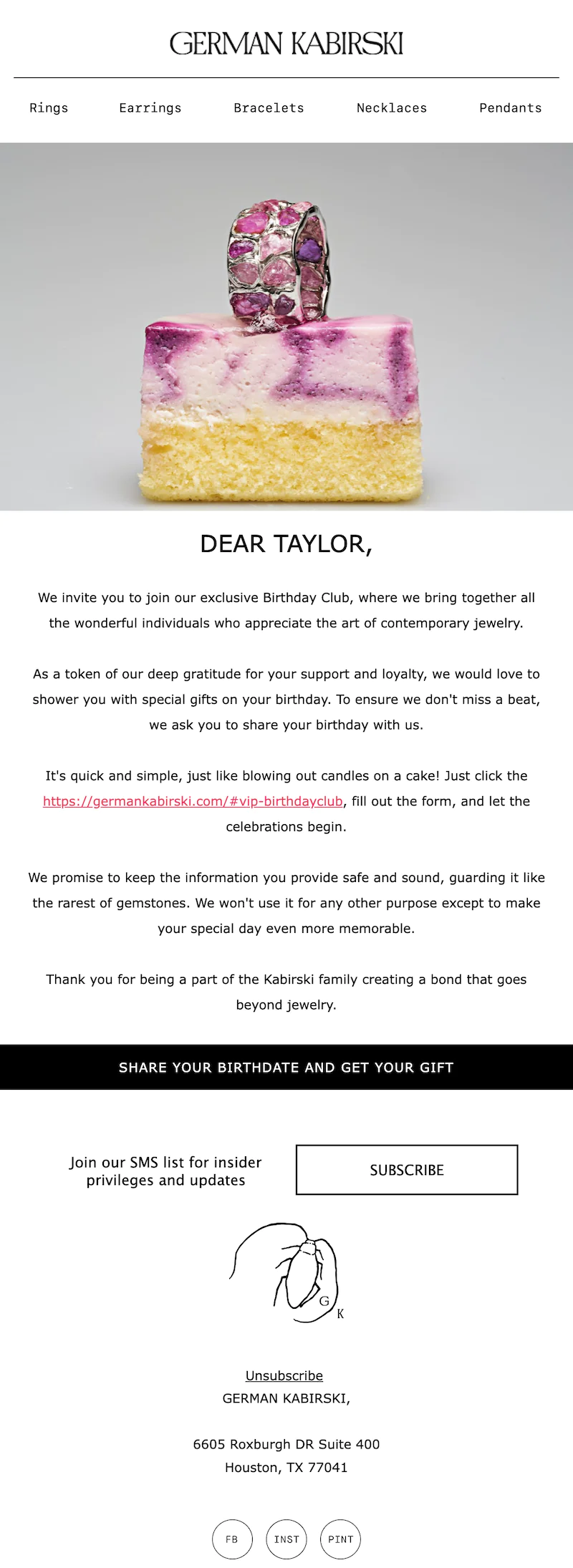
Invitation email from the welcome workflow for customers whose birth date is unknown — we invite them to share their birthday info in exchange for a personalized discount
Once they click on a link, they see a pop-up, also configured in Maestra. The customer enters their birth month and day, and the data from the pop-up is automatically transferred to the unified customer profile. After this, the customer enters the birthday workflow.
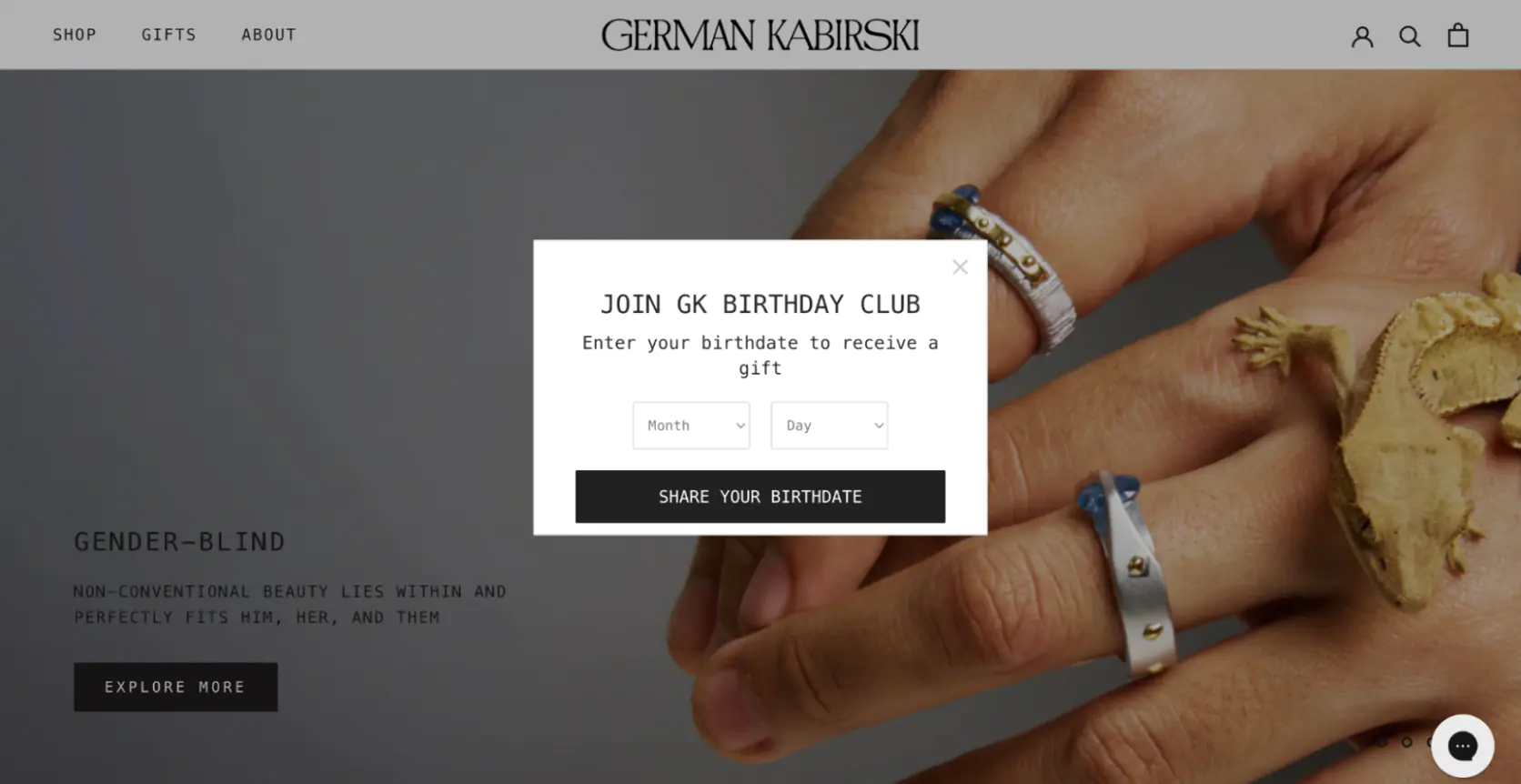
A pop-up collecting the birth month and day. We don’t ask for the year to encourage more customers submit their birthdays
How automated email campaigns generate revenue
Over the course of four months, German Kabirski launched 31 workflows, combining email sequences that react to the customer’s interaction history with the brand. The emails include individual promo codes and personalized product recommendations, while the website adapts to each individual customer’s behavior. Below are a few examples.
Abandoned Checkout
The “abandoned checkout” workflow is similar to the abandoned cart with one significant difference: the email includes a link to the unique checkout for the client in Shopify.
This means that if a person abandons their cart on their computer but returns to the website through the link provided in the “Abandoned Checkout” email on their phone, their cart and checkout state will be restored. This is convenient because the customer won’t have to rebuild their cart from scratch but rather just make one simple click to restore the items they added. The average conversion rate of emails from the workflow is 1.5% based on last paid click attribution.




Some examples of emails from the “abandoned checkout” workflow
Birthday series discount workflow
The birthday workflow is sent to those customers who provided their date of birth in the pop-up. We send the emails with individual one-time use promo codes not only on the actual birthday but also one week before the celebration and three days after, in case the customer hasn’t completed their order.
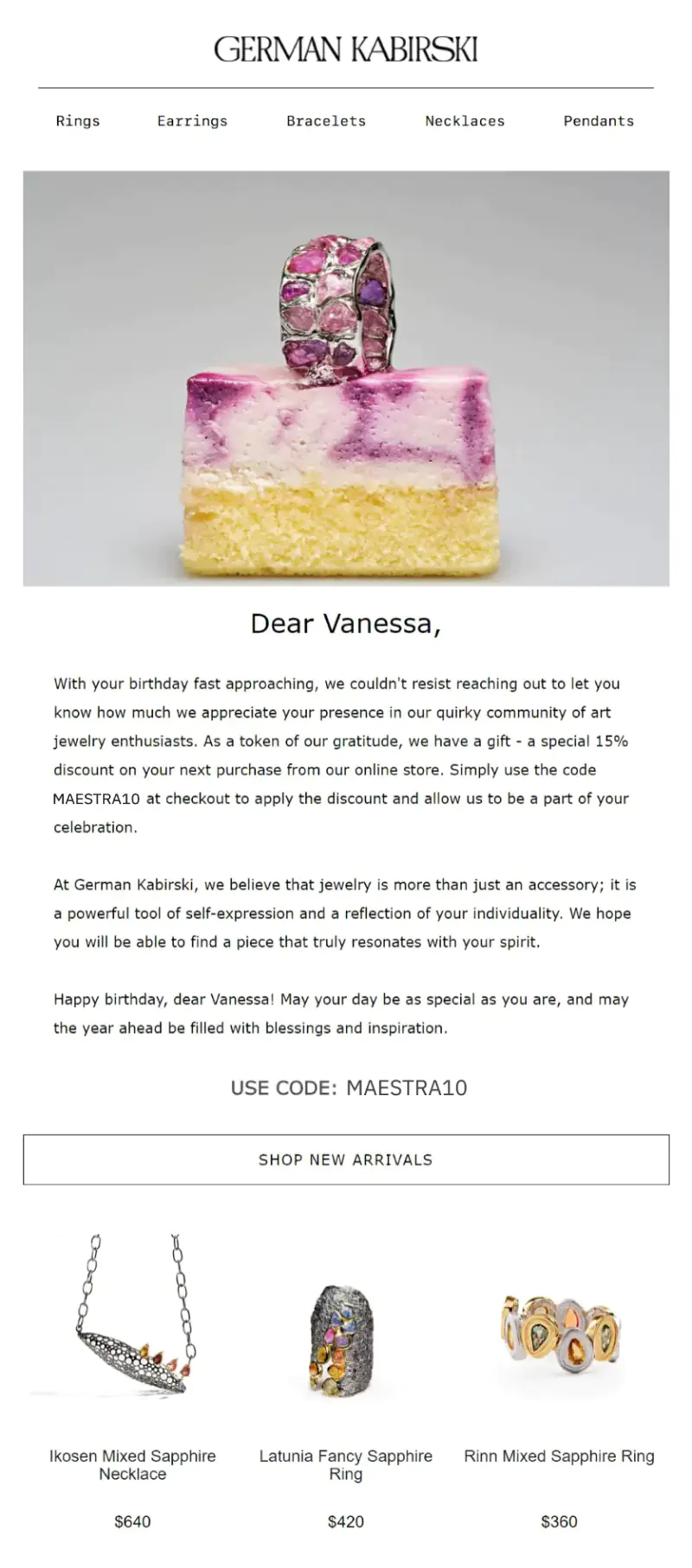
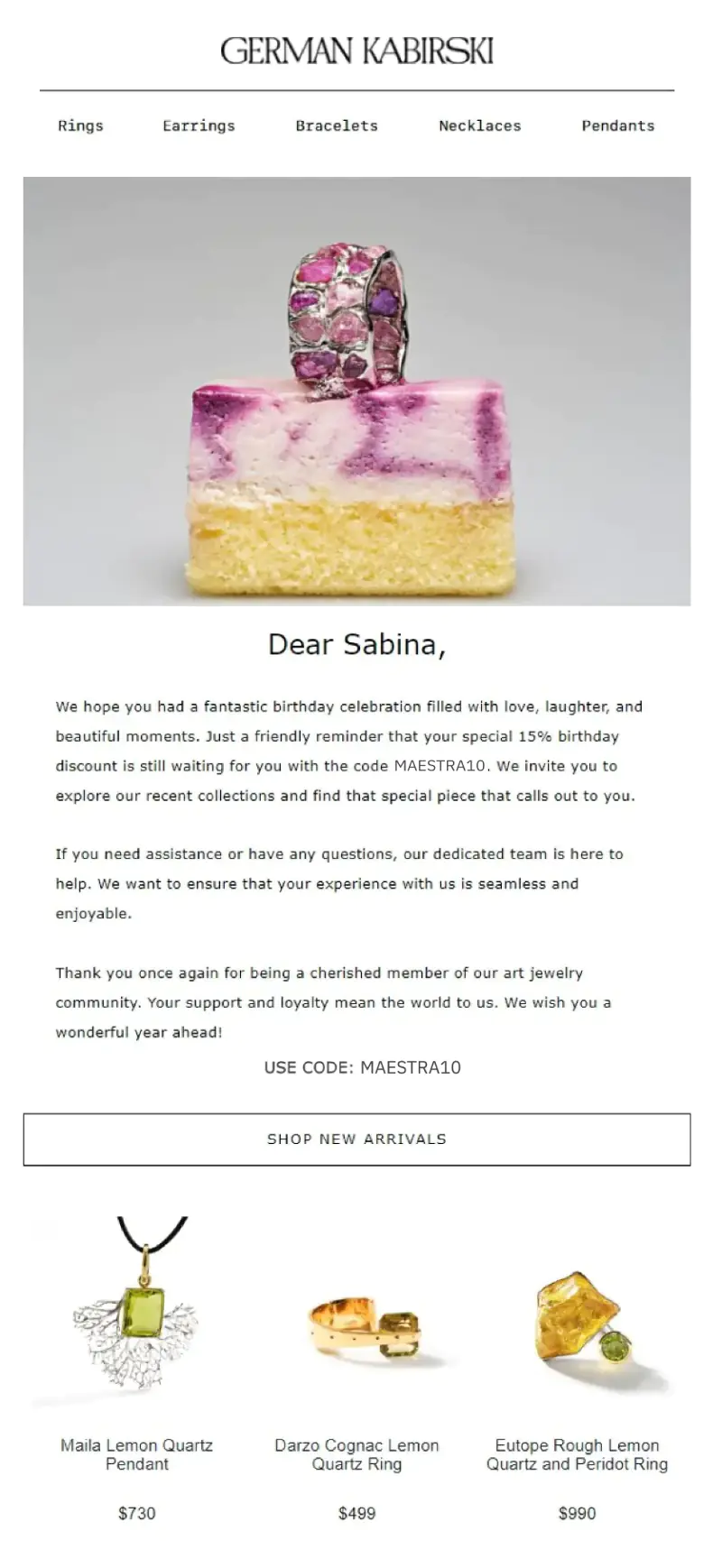
Floating discount bar
Once the customer clicks a button in any of their email campaigns with a promo code inside, a floating bar with their promo code is displayed at the top of the webpage.
Below is an example of an email from the abandoned cart series with the promo code MAESTRA10 and product recommendations. If the customer clicks through the email, they will see a banner on the website with the corresponding promo code, which can be copied by clicking and applied at the checkout. The floating bar works this way for every campaign with a promo code inside.
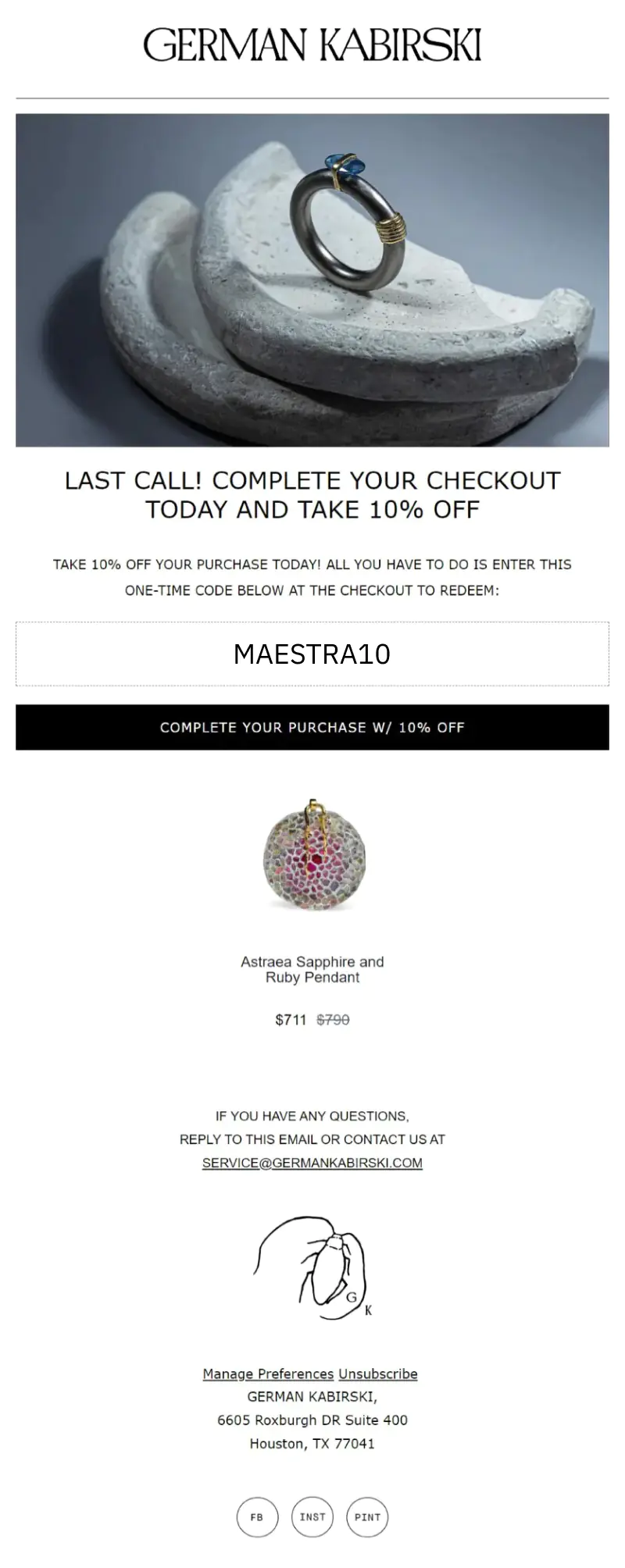
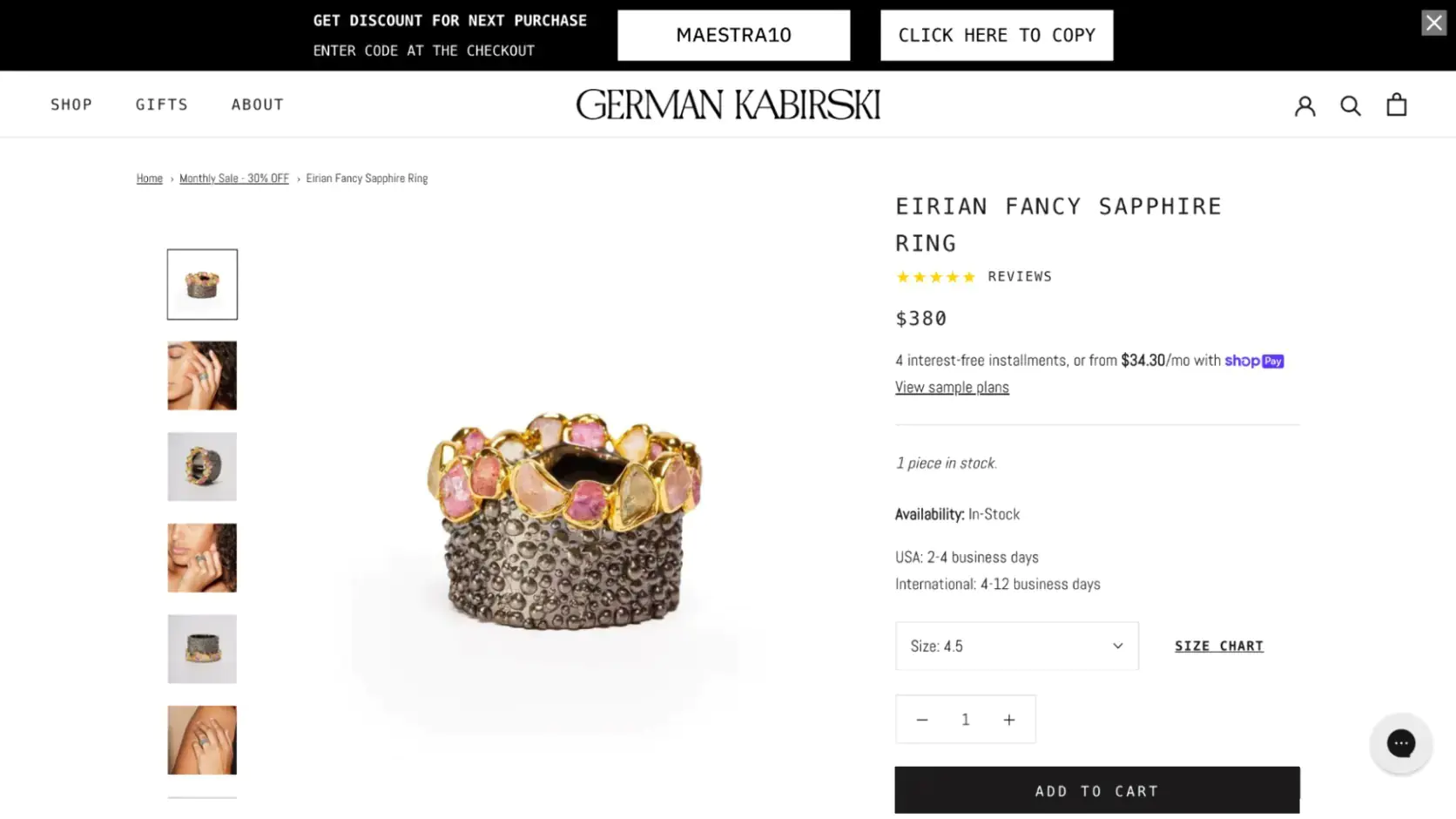
Next steps
German Kabirski’s plans include launching new workflows. For instance, one of the new flows will involve sending a digest of new, exclusive jewelry pieces that have become available in the size that the customer previously purchased.


